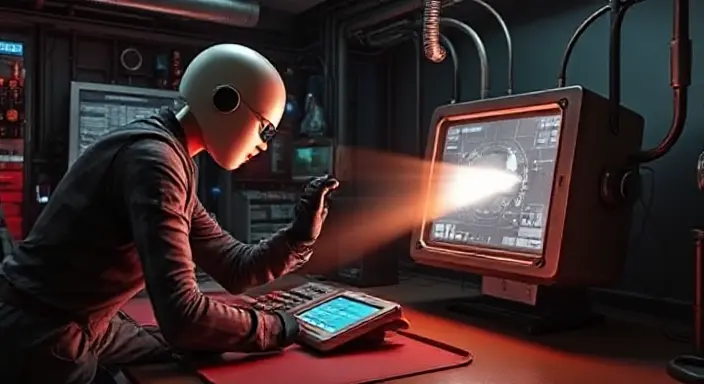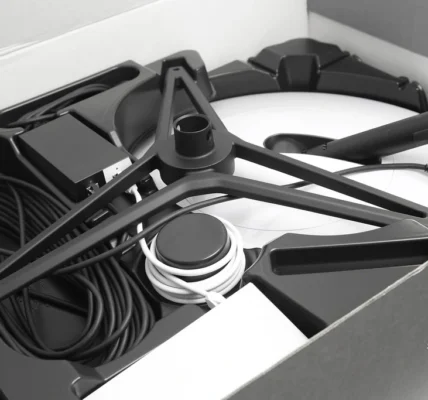In the fast world we live in today, technology is non-stop. From having a smartphone in our pocket to smart homes, we keep breaking barriers in innovation. However, not all new tech breakthroughs are welcomed so warmly. Some innovators made them for reasons that may sound rather trivial or unnecessary. In this blog post, we’ll explore several technologies created for stupid reasons, uncover their real-world applications (if any), and analyze whether these innovations were a waste of resources or just quirky moments in technological history.
What Does It Mean for Technologies Created for Stupid Reasons?
Let’s first define what we mean by “stupid reasons.” In this sense, developers create technologies for purposes that seem either too trivial, unnecessary, or even absurd. Sometimes, inventions are a product of misdirected creativity, or they might serve purposes that are too narrow to become widespread. Other times, developers might design a technology with good intentions but it lacks practical application.
However, every “dumb” technology has something to offer—whether that is humor, a lesson, or perhaps something hidden that does not reveal its value until some time later.
Technologies for Stupid Reasons: Some Nice Examples
1. The Pet Rock
In the 1970s, he introduced a product that would go on to become forever branded in the history of “useless” innovations: the pet rock. In short, this was a rock that one marketed as a pet. There was a cardboard box and even holes to simulate breathing, so people could care for this low-maintenance substitute for the canine or feline companion.
This might seem a strange idea, but the pet rock gained its popularity overnight, selling millions within a short time. Despite it not having any practical use, the pet rock highlighted an interesting point about human behavior: sometimes, it is not about necessity but about novelty and humor.
Real-World Takeaway: While the pet rock was a “dumb” idea, it tapped into the novelty market and showed that people are sometimes willing to buy into absurdity for fun.
2. Smart Forks to Track Your Eating Habits
This would also make smartwatches and fitness trackers smart, which enable easy monitoring of personal health. It would seem that smart fork technology somehow differs because it tracks the number of times a person introduces food into the mouth by buzz every time there is a toothful. Smart fork technology prevents unhealthy eating with promises to eat slowly or mindfully since it vibrates every time.
Although monitoring eating habits itself does not sound like such a terrible thing, an appliance like the smart fork really overdoes things in practice. What’s a device for telling a person to chew his or her food? A lot argue that the complexity would be introduced into something too simple: eating mindfully.
Real-Life Implication: They might have meant to eradicate the health issue; however, the creation does not show as a result of their effort towards creating something helpful.
3. USB Pet Rock
A tech-savvy entrepreneur introduced the USB pet rock, which represents the present-day equivalent. There was no innovation this time—just a mere rock that did absolutely nothing more than sit in the USB socket, taking all that space inside your computer but it plugged right into a USB port.
In a time when technology was evolving rapidly, some questioned why anyone would buy a USB rock. Yet, it became a novelty item for a while, appealing to the tech-loving crowd who appreciated quirky, offbeat gadgets.
Real-World Takeaway: The USB pet rock was a humorous commentary on the rapid pace of technological development, mocking the sometimes absurd nature of new gadgets.
4. Self-Watering Plant Pots
Although many people forget to water their plants, this high-tech, self-watering pot does not seem to solve this problem in the most efficient manner. The ones that use this concept typically consist of complex systems of sensors, water reservoirs, and even automatic pumps that ensure the right amount of water reaches the plants at the proper time.
On paper, this is a great idea: no wilting plants. Taking the fact that even a simple watering schedule can get the job done, this self-watering pot seems overengineered to fix a relatively easy problem. On top of all this, many of these pots are pretty expensive and maintenance-heavy.
Real-World Takeaway: This technology might be of some interest to a plant enthusiast who likes gadgets, but its practicality in real life is highly debatable.
5. 3D Printed Food
3D printing is slowly changing all sectors, from health to manufacturing. However, when it comes to the food industry, it’s a bit of a joke. 3D-printed food is imaginative, but what they usually produce is terrible-tasting foodstuff that isn’t very nutritious.
From printing pizzas to chocolate sculptures, the idea of printing food in a machine seems more of a fad than a practical approach to hunger or nutrition. Its presence in the culinary world makes it hard for many people to justify the use of a 3D printer for something as basic as eating.
Real-World Takeaway: It’s more gimmick than revolution, considering it still has much to learn on the front of taste, texture, and nutritional value when it comes to 3D-printed food, which is as futuristic as interesting.
6. The Smart Toaster
This is actually for real: it’s a smart toaster. Set the browning level for your toast, control the timer on the appliance through a smartphone application, and basically, have some fun controlling a kitchen appliance via an app.
While people are getting quite accustomed to controlling all appliances with a phone, perhaps they need not deploy technology for a toaster. Toasting bread is quite a simple operation that most people have mastered in the absence of any additional features or automation.
Real-World Takeaway: The smart toaster is an unnecessary luxury for most people, complicating a very simple daily operation.
Why Do People Invent Technologies for “Stupid Reasons”?
It is intriguing to raise a question in light of the creation of apparently frivolous or absurd technologies: Why do people keep inventing them?
- Novelty and Humor: Many of these “stupid” technologies are invented for just the reason that they are funny or unique. It fulfills the human quest for novelty and amusement.
- Marketability: Products that seem weird or quirky tend to make waves. They get media attention and word-of-mouth marketing, even if the technology itself has little practical application.
- Futuristic Appeal: Many people are captivated by futuristic technologies. Even if a device doesn’t solve a real-world problem, the appeal of cutting-edge tech can be irresistible.
Conclusion of Technologies Created for Stupid Reasons
In short, people created this technology for stupid reasons, reflecting not only man’s creative talents but also showing irony in the excess of novelty chasing—from pet rocks to smart toasters, one isn’t quite assured of significant applicability in functional terms, but it makes for good comedy. Sometimes, that is all technology ever does. Sometimes, that’s all a technology is ever good for anyhow: a function to stimulate interesting conversation and an ability to get people to raise an eyebrow to provoke laughter.
At the same time, these technologies remind us that not all creations of tech need to change the world; sometimes, it is enough for it to make us smile.
Read Also: What Is The Recommended Approach To Building Knowledge In Tech?
FAQ Section of Technologies Created for Stupid Reasons
Some examples are pet rock, smart forks, USB pet rocks, and 3D-printed food.
It is because the people build it for novelty, humor, and marketability. These inventions buzz and attract much attention because they are unusual and quirky.
No, not for most of us. There is nothing in toasting bread that requires intervention by high technology—smart toasters add features not needed.
The USB pet rock was a satirical take on the rapid development of technology, poking fun at the sometimes ridiculous nature of new gadgets.
Though in practice, these technologies are not highly useful, still, most of them are amusing, entertaining, and at times, worth talking about.





